Summary
Hydrogen is forecast to play a leading role in the energy transition process, considered the "green oil of the 21st century". The article introduces the process of production, storage, transportation and consumption (gas, bus fuel) of green hydrogen and the continuous operation of Energiepark Mainz - Hydrogen production plant from wind power with capacity 6 MW in Germany. On that basis, analyze opportunities and points to note when applying Energiepark Mainz's model in the green hydrogen production strategy in Vietnam.
1. Introduction
Hydrogen is an energy source that does not produce carbon emissions, has abundant reserves and the potential to replace fossil fuels. Currently there are two main methods to produce hydrogen: methane reforming and electrolysis. Electricity used for electrolysis from solar or wind energy is an advanced method and is considered the cleanest today because it does not emit greenhouse gases.
Green hydrogen has an important role to play in Germany's energy transition. The first green hydrogen production system to be built is Energiepark Mainz, located in Mainz-Hechtheim (Mainz is the capital of the German state of Rheinland-Palatinate).
Energiepark Mainz has a total investment of 17 million EUR, of which the German Government supports about 50%. The Energiepark Mainz system began to be designed in 2010 with research cooperation from large organizations/universities including Mainz Stadtwerke AG (supplying surplus wind power and distributing green hydrogen products), Siemens AG (supplying Supply and installation of water electrolysis systems using PEM (Proton Exchange Membrane), Linde AG (storage and transportation of liquefied hydrogen gas) and Rhein Main University of Applied Sciences (measuring and researching operating results) .
The 5-year construction process of Energiepark Mainz includes the following steps: Developing the idea of green hydrogen production (2021); research and prepare construction sites (2013); production and installation of PEM water electrolysis systems (2014); put into operation (2015); commissioning, research (2016); commercial operation (2017).
The Energiepark Mainz system completely connects the production stages of green hydrogen using electricity from renewable energy (wind turbines) using the PEM water electrolysis method. The hydrogen product is then used either as supplementary fuel (20% capacity) to the existing natural gas system or as storage fuel (tank) or transportation fuel (via truck) (Figure 1). According to statistics, 80% of green hydrogen production is used for technology and transportation (public buses). The design of Energiepark Mainz is presented in Figures 2 - 7 and Table 1.
2. Operational results
Energiepark Mainz has been operating continuously, without incident since 2015. The plant ensures the interfaces between the wind turbine energy system, PEM green hydrogen production unit, power grid and gas system. Energiepark Mainz's entire system is tested weekly with varying operating parameters to determine the optimal solution according to the consumer market. Results achieved after 2 years of trial operation:
Guaranteed continuous operation:
+ The factory uses excess energy from wind power to produce hydrogen. Because wind power is unstable and intermittent, Energiepark Mainz uses a PEM electrolyzer that can start up 4 MW of continuous operation in just 15 seconds;
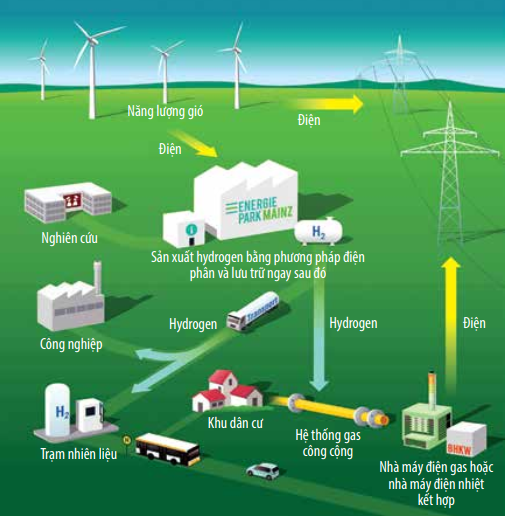
Figure 1. Diagram of the entire Energiepark Mainz plan [1].
+ Flexible start-up of the electrolyzer is the key to resolving temporal fluctuations of the wind turbine, helping the plant operate stably;
+ Energiepark Mainz capacity adapts to a high level of speed, because of its high flexibility, it can support the power system.
Efficiency:
+ Plant efficiency (calculated on the crude heat generation value of hydrogen = 3.54 kWh/Nm³ or 39.41 kWh/kg) and green hydrogen product capacity (Nm³/hour) depending on the partial load range from 0 - 6,000 kW (including main capacities 2 MW, 4 MW and 6 MW) shown in Figure 8;
+ Energy loss details of each equipment component measured at 2 MW partial load. Accordingly, the highest energy loss is at the PEM electrolyzer (22.9%), other parts such as transformer stations, air compressors... lose a total of 6.7%. Total energy efficiency was determined to be 70.4% at 2MW partial load (Figure 9).
Using hydrogen products:
+ Green hydrogen loaded into the gas system is available from 2% and can instantly increase up to 5% volume (according to
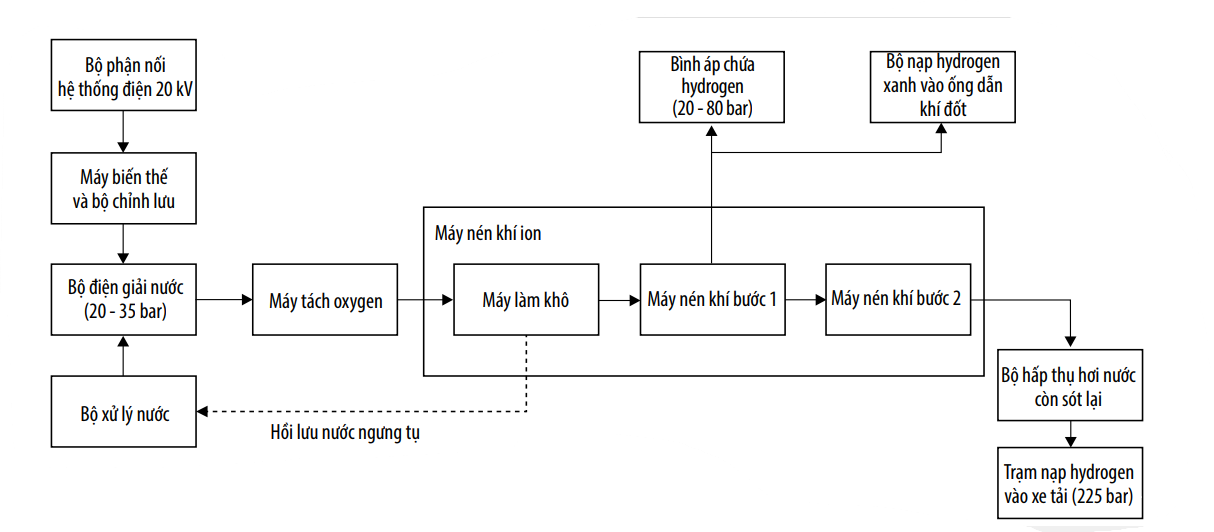
Figure 2. Energiepark Mainz design diagram.
| System | Device | Design capacity |
| Wind electricity | 4 wind turbines of Mainz Stadtwerke AG. | 4 × 2 MW = 8 MW. |
| Transformer station |
SINAMICS DC power. |
|
| Water electrolysis(Figure 3) |
3 PEM (Proton Exchange Membrane) electrolysis units • Operating capacity • Maximum operating capacity •Maximum hydrogen capacity • Hydrogen product pressure. |
Siemens, type SYLIZER 200
• 4 MW • 6 MW • 1,050 Nm³/hour • 35 bar. |
|
Compressing green hydrogen gas (Figure 4) |
Linde AG's 2-stage hydraulic piston compressor can load hydrogen into pressure tanks or trucks. |
• Use ionic liquid to seal and refrigerate
• Change load capacity quickly • High efficiency at partial loads |
|
Hydrogen gas storage and drying (Figure 5)
|
Two air tanks (possibly containing moisture) under a maximum pressure of 80 bar |
2 × 82 m³; capacity: 780 kg; maximum 1,000 kg (33MWh) [2] |
|
Drying with 2 TSA (Temperature Swing Adsorption) devices.
|
• Inlet air content: 0.5% O2; 3% H2O • Output gas content: 0.0002% O2; 0.0005% H2O |
|
|
Fill a natural gas pipeline with green hydrogen (20% of total green hydrogen production) (Figure 6) |
Providing support gas for the City near Energiepark Mainz (1,000 households). |
Charge maximum 10% hydrogen (according to German gas law); Pressure: 7 - 9 bar |
|
Transporting hydrogen in trucks, supplying hydrogen filling stations of buses |
Hydrogen filling station for trucks. |
Automatically charge hydrogen with a soft tube. |
|
Technology safety |
Devices for measuring and warning hydrogen gas leaks inside closed factory areas. Important equipment such as piston air compressors, gas tanks, and hydrogen pumping stations into trucks are all designed safely according to the standards and experience of Linde AG. |
Hydrogen leak alarms are mounted at necessary places (PEM system, building ventilation doors [3]. |
|
Factory control |
Central automatic control room (Figure 7). |
Table 1. Equipment system design parameters of Energiepark Mainz
German gas law: hydrogen can only be loaded into the gas system up to 10%). The results of measuring the Wobble gas index (kWh/m³) and heat generation value (kWh/m³) show that it does not affect the equipment used.
+ The plant can flexibly supply hydrogen depending on changing gas consumption needs: Flexible distribution ability and high hydrogen storage;
+ Operating hydrogen pressure can be maintained for up to 60 minutes to avoid loss when demand changes.
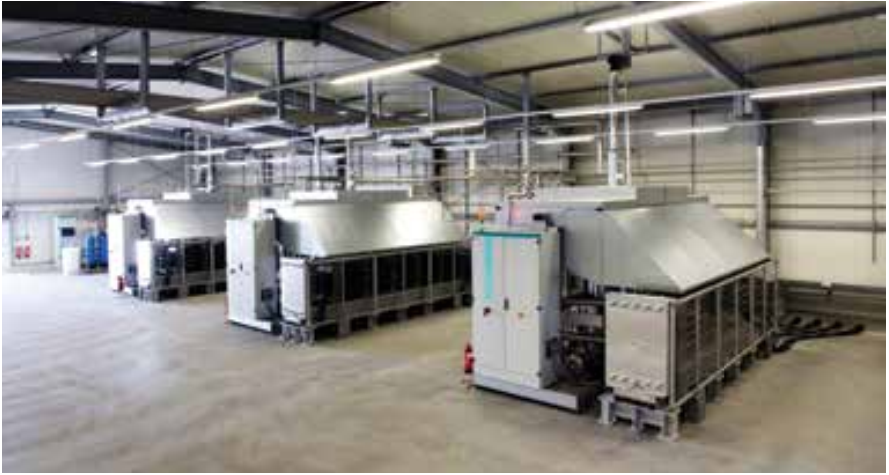
Figure 3. Siemens PEM system [4].
Economic efficiency:
+ Total investment in Energiepark Mainz is about 17 million EUR, of which the German Federal Ministry of Economic Affairs and Energy (BMWi) supports about 50%.
+ Up to now, Energiepark Mainz has not officially announced the price of green hydrogen products. In addition to the production price, the cost of green hydrogen products depends on other factors such as part load, operating time, taxes levied on fuel products by the German government...
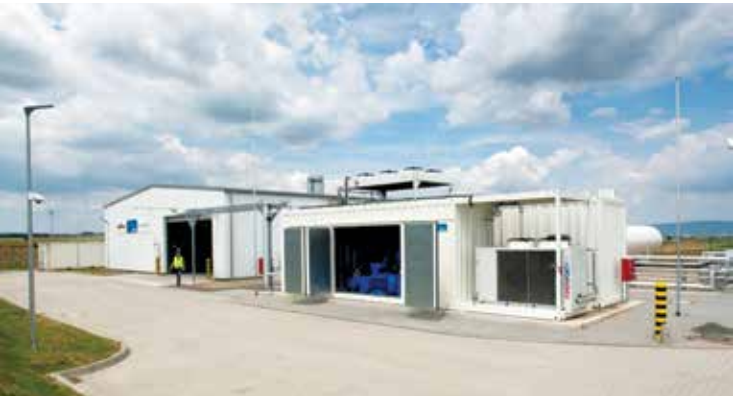
Figure 4. Green hydrogen compressor container [4]
+ To date, Energiepark Mainz has broken even, although the current price of green hydrogen is not competitive with the price of hydrogen from other sources on the market [3, 5]. According to documents of the German Parliament [6], the production price of green hydrogen in 2019 ranges from 15 - 18 Ct/kWh, on average about 16.5 Ct/kWh (= 5.5 EUR/kg) [6].
After the testing phase, the results show that Energiepark Mainz can be developed to supply hydrogen commercially. Participating businesses including Stadtwerke Mainz and Linde AG have continued to cooperate since 2018 due to:
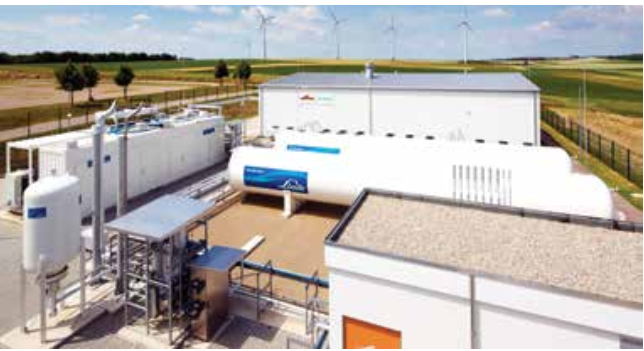
Figure 5. Green hydrogen product storage and drying area [4]
- Results during the testing period demonstrate that Energiepark Mainz is eligible for commercial operation;
- The partners believe that the goal of using renewable energy to produce hydrogen (Powerto-H) as an alternative fuel will be successful in the long term and the market demand for green hydrogen is increasing;
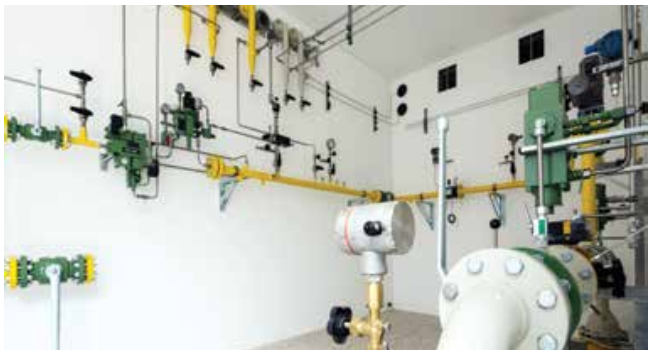
Figure 6. Charging green hydrogen into the natural gas pipeline system [4]
- Trust in the support of the German government;
- The next goal is to make hydrogen production price competitive with fossil fuels.
However, when investing in building green hydrogen projects, there may be risks/weaknesses such as:
- The green hydrogen market as an energy system supports negative development leading to rising costs;
- Oil and gas prices decrease, competing with the price of hydrogen produced by steam reforming;
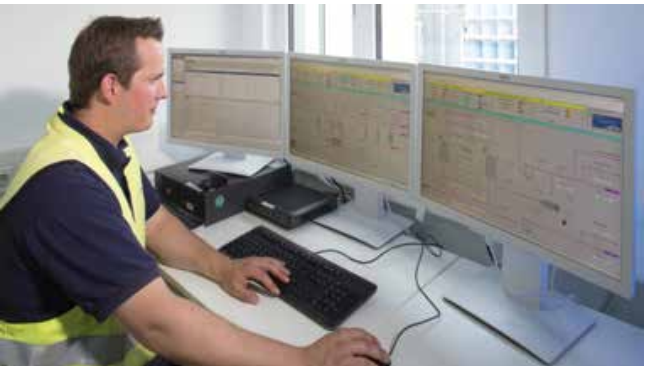
Figure 7. Automated control room of Energiepark Mainz [4].
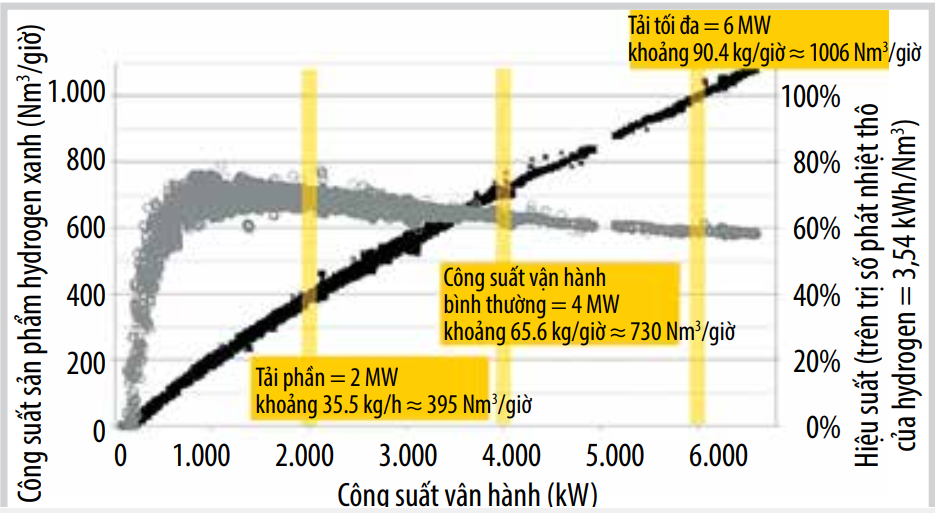
Figure 8. Graph of measured Energiepark Mainz power and efficiency under 2 MW, 4 MW and 6 MW partial loads (2015).
|
Circuit distribution equipment |
Transformer station + inverter |
PEM water electrolysis kit |
Step air compressor |
Other devices |
|
0% |
1.7% |
22.9% |
2.5% |
2.5% |
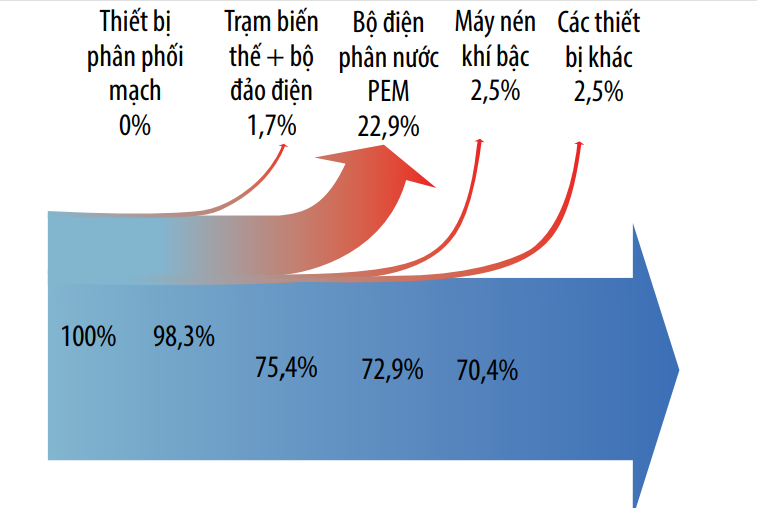
Figure 9. Energy loss chart of each equipment component of Energiepark Mainz measured with 2 MW partial load
- Problems in operating key equipment (such as compressors) when equipment usage time is limited, causing revenue to decrease;
- Electricity prices from renewable energy change in a negative direction due to the government's laws and pricing policies, causing costs to increase.
3. Conclusion
Green hydrogen technology is being actively deployed by countries as one of the solutions to reduce greenhouse gas emissions, combat climate change, and create new markets and new jobs. Many countries are asserting their leading role in green hydrogen technology in the future such as Germany, Korea, Japan...
With successful practical operation results, Energiepark Mainz can be a model for Vietnam to apply green hydrogen production technology from renewable energy (wind, solar) with water electrolysis systems such as:
Energiepark Mainz takes advantage of excess power from wind turbines when the grid cannot be recharged or is overloaded due to the fluctuations of this type of renewable energy. The plant applying PEM electrolysis technology has the ability to start and operate very quickly (15 seconds to 4 MW capacity), and has high flexibility.
- The complete green hydrogen system includes the following steps:
Production: The system uses renewable energy (onshore wind turbines) to produce green hydrogen (and oxygen byproducts for medical or technological uses) with current popular electrolysis technology such as: PEM , Alkaline Electrolysis (AKL) or Solide Oxide Electrolysis (SOE);
+ Storage: Use a 2-stage air compressor to store hydrogen (container);
+ Transportation: Load into existing gas systems or via trucks;
+ Use: Transport from the tank by truck to the point of consumption (hydrogen filling station for buses or factories) or use as support gas for existing gas systems.
Energiepark Mainz has a small capacity of 6 MW, suitable for operating tests and measuring necessary parameters (operating at partial loads, wind turbine fluctuations, consumer markets...). Thereby helping to optimize operating parameters in Vietnamese conditions (wind, temperature, water source (sea), storage and transportation equipment), gather practical operating experience, and train personnel. expertise for the future.
- Linking businesses to learn optimal experiences from green hydrogen technology:
+ Renewable energy (onshore and offshore wind turbines);
+ Importing, manufacturing and developing electrolysis equipment such as: PEM, AKL or SOE;
+ Gas technology engineering (storage tanks, air compressors, gas pipelines, hydrogen filling stations).
Building cooperation can be the first step towards forming a "Hydrogen Association" as has been done in Europe and China (including businesses, research institutes, universities, financial agencies... ) with the goal of developing hydrogen technology to create national synergy.
However, when applying this model in Vietnam, please note:
- Increase plant efficiency: The plant's total energy efficiency measured at 2 MW is only about 70.4%, meaning about 30% of heat is lost when the plant operates at low capacity. The main energy loss lies in the PEM electrolyzer. Electrolyzers are therefore being developed to increase plant efficiency and reduce costs.
- Investment capital: Linking units related to technology for producing, storing, transporting and consuming green hydrogen (electricity, onshore and offshore wind renewable energy, oil and gas, steel, nitrogen fertilizer, cement...) share the same goal of choosing green hydrogen in the next 10-15 years as a greenhouse gas reduction strategy.
- Choose a suitable location to build a green hydrogen plant such as available or near wind energy sources; gas pipeline system to load green hydrogen as supporting fuel; Hydrogen consumption markets such as oil refineries (Dung Quat, Nghi Son), fertilizer and nitrogen factories (Phu My).
- State support: In addition to investment capital from domestic enterprises and foreign investment, there needs to be active support from the State (in terms of policy, investment capital) in the process of launching the technology. green hydrogen turmeric. With a small capacity (4 - 6 MW) that can minimize economic risks (due to evaluating the role of green hydrogen as the main fuel in the future to reduce greenhouse gases), Germany has established a National Hydrogen Strategy. participating and determining the roadmap and financing for this strategy with a total investment of up to 9 billion EUR (Energiepark Mainz and BMWi alone have supported about 50% of the investment capital).
- In addition to the production price, the cost of green hydrogen products requires price support or preferential taxes in the early stages, similar to FIT prices for wind and solar power.





